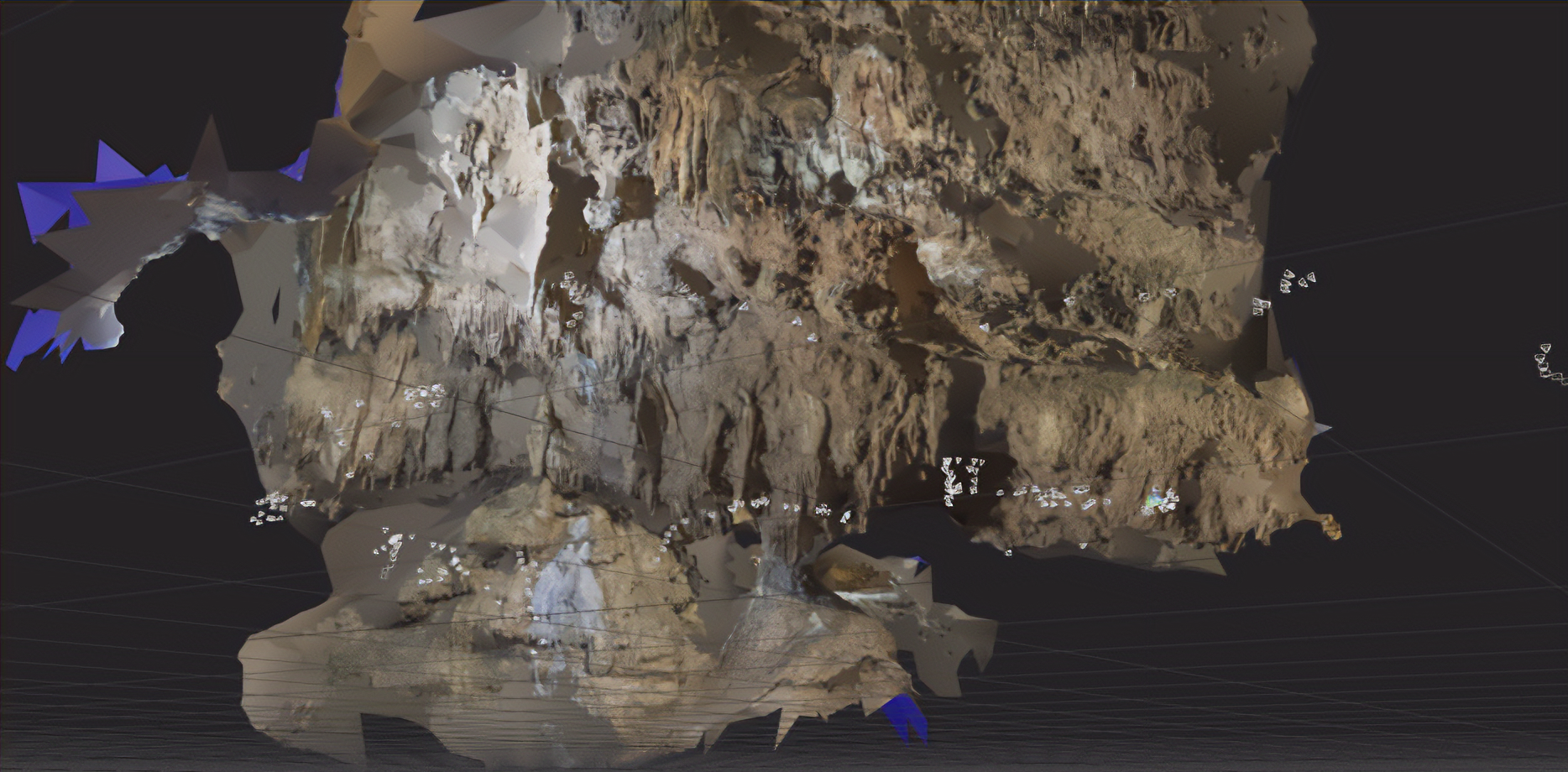The other point of interest near Shenandoah Natural Bridge is the Saltpeter Cave, acccessible by a stone footbridge that crosses the creeek so that visitors to the park can explore some of the mouth of the cave.
I spent time documenting this, and working it into a series of nanite pieces just as I had done with the bridge. You can see some of this imagery here.


But I also wanted to explore whether I would be able to realistically depict a cave interior, which I attempted to do by exploring some of the nearby caves located just before the visitor entrance to Shenandoah Natural Bridge, a place called Caverns at Natural Bridge. This exercise was as much about planning an excusion to a controlled setting as anything else, as I took two tours, an initial recon and then a second more leisurely tour that allowed me more time to gather the photography I wanted.

While not perfect, I did get a lot of very useful photogrammetry from this visit, which I used to generate optimized nanite mesh from. I then spent some time making a large interior space for the cave, although this is really more of a proof of concept at this stage.


Also in this stage, I experimented with adding ivy sections of growth that could be treated as nanite objects, to help integrate the mouth of the cave into the surrounding geometry more effectively.

For this, I used the BagaPie Modifier, which was very handy for it’s Ivy tool. I realize that recent advances in PCG in Unreal may do more or less the same thing, and I would like to push further with that, but I did want to call this out as another way for integrating nanite.



